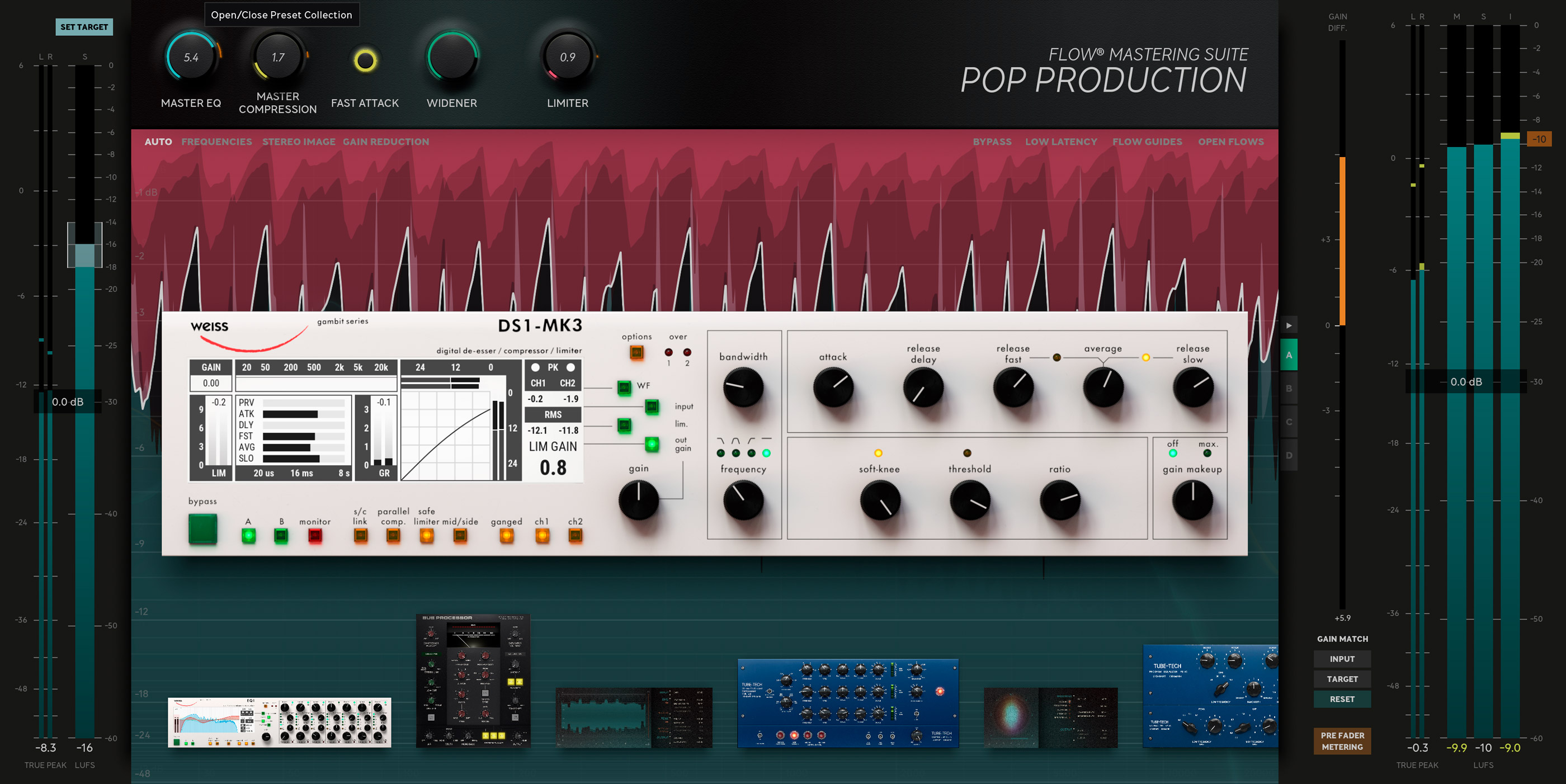What is limiting?
Limiting is a safeguard for audio peaks not exceeding a set level. It prevents unwanted distortion and clipping that occur when the audio signal exceeds the system's maximum level, 0.0 dBFS (decibels relative to full scale).
What is True Peak limiting?
Even when using limiting as a safeguard, so called inter-sample peaks can occur after digital-to-analog conversion (DAC) or when converting to lossy formats like MP3. In this conversion, peaks that occur between the sampled points of a digital audio signal (inter-sample peaks) can cause distortion if they exceed 0 dBFS. True peak limiting is used to ensure that these peaks do not exceed a specified threshold. The drawback with using True Peak limiting is that you might not be able to achieve a master as loud as without True Peak limiting. But, using different limiting algorithms can also be an aesthetic choice: Factors include choices in level of transparency, aggressiveness, more or less pronounced transients, or artifacts like pumping or even distortion.
What is True Peak metering?
True peak meters (complying with ITU-R BS.1770 and EBU R128 standards) are used to measure inter-sample peaks. Oversampling techniques are used to predict and measure the signal’s peak levels more accurately than standard peak meters. The level is referred to as dBTP (decibel True Peak).
Should you care about True Peak limiting?
Many professionally mastered albums contain inter-sample peaks, while still being considered “good sounding”. One conclusion from this might be that the peaks in themselves may not be an issue, it’s more about if they are noticeable in a bad way or not. Another thing to consider is what you are aiming to achieve. There is a trade-off between “loud” and “clean”, and inter-sample peaks are a part of this equation. If your goal is “loud”, then you might need to have a few inter-sample peaks above 0 dB. See Recommended Output Levels for our take on how you should use Flow® Mastering Suite in this regard.
